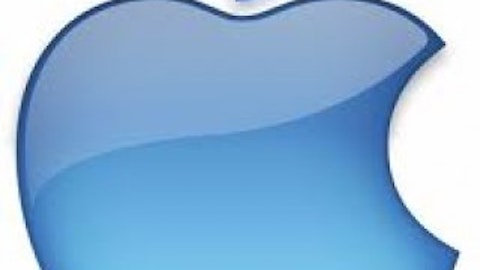And all of the companies that I choose have maintained their dividend-raising streaks for more than 10 years, which means they made it safely through the worst recession of modern times without cutting or freezing their dividends. If they succeeded there, chances are very good that they will not have to cut or freeze in the future, barring a true financial disaster.
To be sure, I am looking at each company’s future earnings growth projections, as well as their historical dividend metrics. A company can’t keep raising its dividend if its earnings don’t grow.
My second issue with the WisdomTree fund is this statement, which was in an article about the new fund: “But if the fund’s methodology does track dividend growers in the manner WisdomTree expects then any expectation for outperformance would be over longer periods of time.”
Frankly, I don’t believe that investors are willing to wait years to find out if WisdomTree’s methodology is better than that of any other dividend fund. I know that dividend investors, as a whole, tend to focus more on longer-term versus shorter-term metrics, but this fund will have to prove itself in the short term in order to attract investors, and I have serious doubts about what exactly it will be proving.
At 300 companies and a yield of only 2%, the WisdomTree fund looks suspiciously like the S&P 500 to me. I am betting that its performance will be similar over the next three to five years. Maybe in ten or twenty years, its stock-selecting methodology will be proven superior to another dividend ETF’s methodology, but it may be difficult to persuade investors to stick around for that long.
WisdomTree’s holdings
The fund is more heavily skewed toward technology than most dividend funds, with 20% of the weight in that sector. Industrials, consumer discretionary, and consumer staples each account for 19%, with the remainder of the weight comprised of health care, financials, materials, and energy. There are currently no companies in the telecom or utilities sectors, presumably because they do not meet the fund’s criteria.
The top five holdings include Apple Inc. (NASDAQ:AAPL), Microsoft Corporation (NASDAQ:MSFT), Procter & Gamble (NYSE:PG), Wal-Mart Stores, Inc. (NYSE:WMT), and Coca-Cola Enterprises Inc (NYSE:CCE). I’ve taken a look at most of these companies lately, so I’ll summarize my findings.
Apple Inc. (NASDAQ:AAPL): Apple Inc. (NASDAQ:AAPL) has only been paying a dividend for one year, and the company did increase it after only three payments, by 15%, from $2.65 to $3.05 per quarter. Its massive cash hoard easily supports a continued payment, despite the fact that most of that money resides overseas, and that Apple Inc. (NASDAQ:AAPL) will actually be using borrowed money to pay its dividends and support its stock buyback program. (This is a smart business decision, if not considered especially “patriotic” in that it is less expensive to borrow money than it is to pay the taxes on the repatriated funds.)
The payout ratio of the dividends is a minuscule 19% of earnings, and its 2.8% current yield is attractive for many investors, but too low for me. If they continue to raise the dividend aggressively, it may be something for me to consider in a few years.
Microsoft Corporation (NASDAQ:MSFT): Microsoft Corporation (NASDAQ:MSFT) is also in the “less than 10 years” category, but it’s actually looking quite good. Another year or two of raising, and if it keeps its DGR above 10% (currently at 15.6%) and its projected earnings growth rate high (currently 8.8%), then it might be a consideration. Unfortunately, it does yield less than 3%, and I aim for higher than that, but it is definitely worth watching.
The Procter & Gamble Company (NYSE:PG): A reliable company that has raised its dividend for 59 years, and it can safely be expected to continue to do so. With 8% estimated earnings growth over the next five years and a five-year Dividend Growth Rate of 9.6%, this indicates a healthy commitment to an annual increase in the dividend. The Procter & Gamble Company (NYSE:PG) is a serious contender.
Coca-Cola Enterprises Inc (NYSE:CCE): Coca-Cola’s yield is lower than I like, at 2.7% (but still higher than the S&P 500’s yield), but it has been raising dividends for 59 years, so it’s a pretty safe bet that it will continue to do so. Coca-Cola is projected to grow earnings at nearly 9% annually over the next five years, the dividend has been growing at an average rate of 8.1% over the last five years, and the payout ratio is a decent 67%.
Wal-Mart Stores, Inc. (NYSE:WMT): I haven’t taken a look at Wal-Mart in a while, so I’ll do so now. Wal-Mart yields 2.5% and has been paying and raising dividends for 37 years. Despite challenges to the retail marketplace, Wal-Mart has been holding its own as the king of retail. Wal-Mart’s earnings are projected to grow nearly 10% per year over the next five years, its five-year DGR is a very healthy 13.7%, its total 12-month return is 19%, and its PE is reasonable at 15. All in all, I like Wal-Mart, except for the low yield.
I think with these sorts of holdings, and with the strategy they are following, the fund will quite closely mimic the S&P 500 in both price appreciation and dividend yield. I bet it’s hard to distinguish yourself when you are holding 300 companies. I’ll be watching it to see if this is true.
In the meantime, be sure to read Part Two to find out what I recommend instead of the WisdomTree holdings.
Karin Hernandez has no position in any stocks mentioned. The Motley Fool recommends Apple, Coca-Cola, and Procter & Gamble. The Motley Fool owns shares of Apple and Microsoft.
The article Screening Dividend Stocks for Future Growth (Part I) originally appeared on Fool.com.
Copyright © 1995 – 2013 The Motley Fool, LLC. All rights reserved. The Motley Fool has a disclosure policy.




